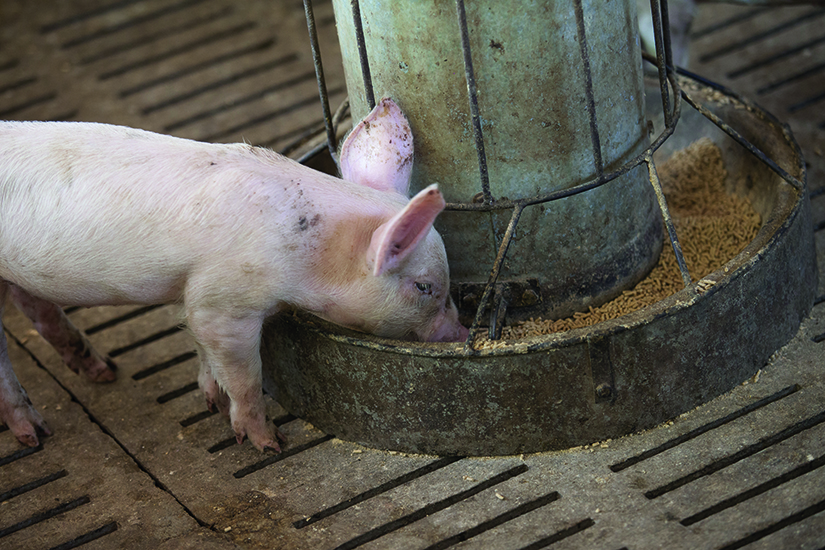With low piglet birthweights a growing concern, particularly in larger litters, I have been studying the range in weights in relation to litter size.
Here’s a typical example from two recent farm visits. Birthweights for a litter of nine piglets born alive ranged from 1.2kg to 1.6kg, whereas the range in litters with 14 piglets was 600g to 1.7kg. In litters of this size, it’s typical that 15% will be less than 1kg.
Absolute figures between systems will vary dependent on genetics and management styles. But low birthweight is becoming an issue as litter sizes increase, mainly due to the increase in the number of piglets less than 1kg in litters of 13+. AHDB’s current average born alive figures vary from 12.94 to 13.99 per litter.
Low birthweight is a huge pre-weaning mortality risk factor and accounts for 25% of losses at this stage. We typically take 1kg and below as a low birthweight for viable piglets, but viability is more dependent on the individual litter average and distribution in litter weight. This is because litter uniformity impacts massively on direct and indirect teat competition.
Crushing, starvation and chilling are the main causes of piglet mortality in the first two days of life – but the underlying cause in each case is mainly poor colostrum intake.
“Low birthweight is a huge pre-weaning mortality risk factor and accounts for 25% of losses at this stage. We typically take 1kg and below as a low birthweight for viable piglets, but viability is more dependent on the individual litter average and distribution in litter weight.”
These very low birthweight piglets are less competitive at the teat. And they have a higher energy demand per unit of body weight and lower energy reserves to prevent against chilling and crushing.
Each piglet needs a minimum of 200g of colostrum intake within the first 24 hours and all piglets need to have suckled within the first six hours to help reduce nursery mortality. A study by Devillers et al, in 2011, where colostrum intake was above 290g per piglet, showed that body weight at six weeks of age was 2kg heavier.
Whether we’re shunt fostering, cross fostering or split weaning, piglets are inevitably journeying round the farrowing room as we make the best of the 13+ litter sizes.
We are doing so with good intentions, often matching piglets up with functional teats or sows’ milking capability. However, colostrum intake should come from the piglet’s mother and any fostering should occur only after each piglet has had adequate colostrum.
Colostrum yield and composition, especially colostral fat, varies massively between sows and we know surprisingly little about it. Further research into the factors affecting sow colostrum production will hopefully yield more answers to support intakes. The benefits of good colostrum intake are well known. This must be implemented to ensure we are getting piglets off to the best start possible.
By maximising colostrum intake we can work towards achieving maximum kg/crate weaned and, for some, this is where the trade-off sits.




